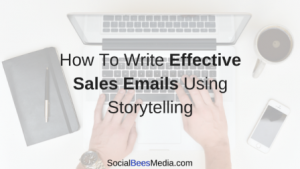Here’s why purchased intent data can be misleading and how to extract valuable insights from your own B2B marketing engagement data.
Did you know you have your own intent data? You don’t need to buy it. If you are executing campaigns, especially in existing accounts, you have data that goes much deeper than you could buy.
You just need to know where and how to look for it. Once you find it, you will realize what’s being sold or said to you about “signals” isn’t exactly true.
The reality of intent signals
As marketers, we’ve been told there is a connection between a “signal” of a prospect seeking information with their interest in your company or product. It is assumed that a response to an offer implies they’re “in the market to buy.”
This is how ZoomInfo describes intent data based on signal strength:
“Derived intent signals are a mix of first-party and third-party signals. These offer insights into behaviors that indicate interest in a company, such as ad engagement, web activity, topic engagement and technology use.”
ZoomInfo, “What is intent data?”
As a result, we tend to think of this as an MQL. But this is where things break from reality. Again, from ZoomInfo:
“Identify interest: Purchase-intent signals help identify which companies are actively researching your solution before they fill out a form on your site or engage with your sales and marketing teams.”
This is simply not true; it’s an assumption. Unless you understand a buyer’s personality, which would give you real insight into their behaviors and motivations, and you can observe this over time, you cannot assume they are “actively searching” for what you are offering because they showed “purchase intent.”
We found only a small percentage (5–10%) of cases where this is true, and we have evaluated engagement and intent data across seven industries and thousands of interactions. You will find the same thing when you look at your own data.
Given that 5% of your targeted audience is in a buying cycle at any one time, this would make sense. But what is more interesting is what is in the 95% of data you aren’t analyzing or buying.
Analyzing your own engagement data
Here’s what you need to know about analyzing your own engagement data. First, pull data from your sales and marketing systems at the account level. We’re often so busy executing we rarely have time to look at what happened in the past. You’ll want to pull 12–18 months of engagement data based on the length of the sales cycle.
Pull data on 10 accounts to start. They could be the 10 biggest or most important (based on pipeline value) accounts. Then, examine the following areas.
Engagement over time
This is an important metric because it’s a measure of mindshare you have with a buyer/contact. Look for how they have engaged with your outreach over the past 12–18 months.
Is it a “burst”? (For example, a C-level engages multiple times in a month.) Or is it “consistent” — a couple of engagements over a longer period of time?
Engagement time
How much time did they spend with your offer? Was it milliseconds or seconds? This helps you understand their level of engagement. Are they glancing at what was sent or did they dig deeper?
Engagement frequency
Did they hit one thing multiple times in one day and over a period of time? This may be an indicator of them forwarding information to others. It also gives you insight into who might be the “router” of information inside the account.
Engagement offer
What are they engaging with (i.e., what offer or outreach)? Are they looking at webinar invites, new case studies, reading the newsletter, etc.? Having 10 accounts will give you a real insight into what content really matters.
Understanding the real meaning behind engagement
Analyzing your engagement data will help you understand if the audience is interested in your brand, solution or just what was offered.
Most times, it will be just the offer. But that’s a great insight because it allows you to narrow down your activities to the things that matter to your audience.
Content offers a window for a salesperson to be viewed as valuable. Unfortunately, it doesn’t tell you if the target is in a buying window or at a certain point in the buyer’s journey.
Giving the sales organization insight into how and what audiences engage with lets them focus on starting a relationship. Through a better understanding of why people are doing what they are doing, it gets to their real motivations. The signal becomes insight.
For example, did they look at your upcoming webinar invite or user conference? How many times did they look at it? How many emails related to those events did they open? Did they attend the event? If they didn’t, you now know they were interested.
This creates an opportunity for the salesperson to offer an on-demand version of the webinar or maybe a free pass to next year’s event. They’re building a relationship based on interest, not jumping to selling a solution they have shown no real interest in pursuing.
That is what you’ll find in the 95% of your engagement data that doesn’t get analyzed. It tells sales who to spend their time with and how to start a relationship so they could one day become new customers.
The post How intent data leads to B2B marketers getting their signals crossed appeared first on MarTech.
MarTech(7)
Report Post







